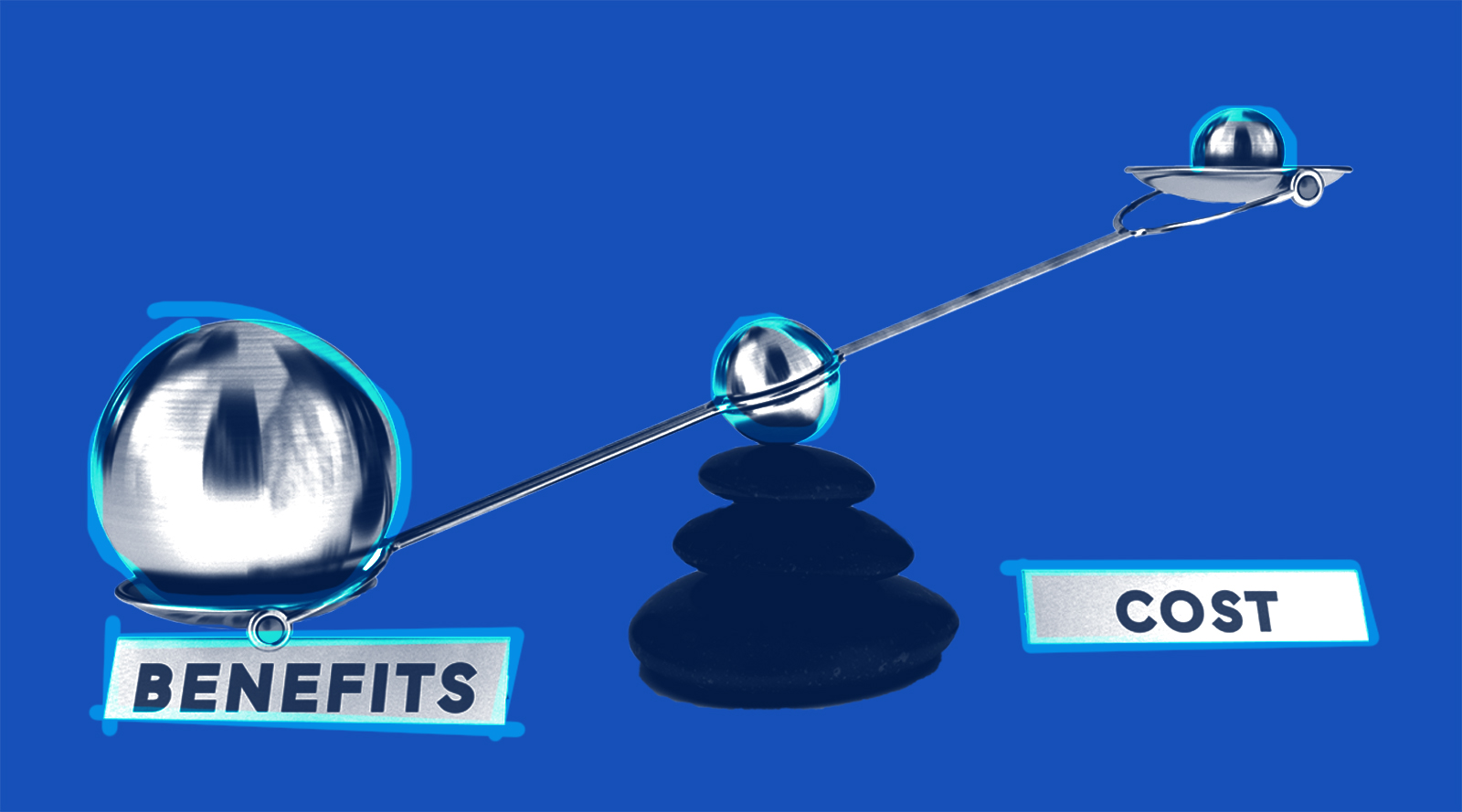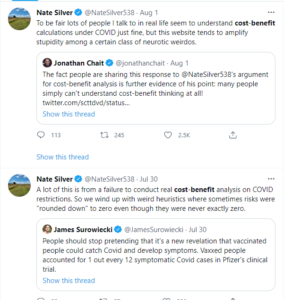Here’s Why Nate Silver and Jonathan Chait Are Wrong About Cost-Benefit Analysis
By Matt Kent

In the past few days, two prominent members of the Twitterverse expounded on cost-benefit analysis, a concept at the heart of the anti-regulatory hold on the federal government.
Election number cruncher Nate Silver talked about cost-benefit analysis in the context of COVID restrictions, lamenting that a failure to conduct the analysis resulted in “weird heuristics.” Pundit Jonathan Chait chimed in, exclaiming that “many people simply can’t understand cost-benefit thinking at all!”
Both Silver and Chait have it wrong when it comes to cost-benefit analysis.
Chait and Silver’s misguided tweets offer prime examples of the most common misconception of cost-benefit analysis: that a simple economic or methodological analysis on its own can fairly account for and drive policy decisions. It’s tempting to think that we can neatly weigh out all the factors and choose the best path, but that’s not what happens in reality.
Anti-regulatory advocates, intentionally or not, exploit this same misunderstanding of cost-benefit analyses to justify regulations that line corporate pockets at the expense of the public.
Cost-benefit analyses at federal agencies are heavily slanted towards industry costs, subject to manipulation, and rely on cherry-picked data sets. The biggest weakness of cost-benefit analysis is that it cannot meaningfully account for priceless values: human life, health, nature, freedom, justice, fairness, equality, or even peace of mind. There’s no input for systems of societal inequity and systematic oppression.
In the eyes of cost-benefit analysis, if you can’t assign a dollar value to it, it doesn’t exist.
Consider some of the greatest failures of cost-benefit analysis:
- In 2001, the U.S. Forest Service proposed a rule that would protect roadless areas of national forests from logging. Despite the incalculable benefit of pristine natural areas, especially considering the worsening climate crisis, the official cost-benefit tally was $184 million in costs and a measly $219,000 in benefits. That’s absurd.
- During the Trump administration’s war on the poor, the U.S. Department of Agriculture (USDA) advanced rules to narrow food assistance eligibility and disqualify recipients from receiving aid. The USDA cost-benefit analysis aimed at justifying the rule shunted aside the massive social costs of food insecurity and cited the benefits of minimized government expenditures. On top of that, USDA didn’t bother to factor in the cost of more than half a million children losing access to free school meals.
- The Trump administration completely miscalculated the potential damages from train derailments when it canceled an Obama-era rule requiring the installation of more advanced brakes by railroads hauling explosive fuels.
- The Trump administration repeatedly demonstrated how easy it is to manipulate cost-benefit analysis when it attacked the used of co-benefits (indirect benefits of a regulation) for some clean air rules but not for others. Under Trump, cost-benefit analysis actually evolved into cost-only analysis, where the benefits of public protections were usually ignored entirely.
- The Obama administration invoked cost-benefit analysis to oppose rules that would have restricted child workers from the most dangerous tasks in agriculture.
- During the Obama administration, the U.S. Department of Justice sought to develop a cost-benefit analysis for a rulemaking to prevent prison rape by creating a comprehensive taxonomy of different kinds of prison sexual misconduct and then assigning a dollar value to the prevention of each, measured down to the last penny. This repulsive exercise was a necessary consequence of requiring cost-benefit thinking in government policies and decisions.
More generally, cost-benefit analysis is a way to bog down the rulemaking process to delay, dilute, and derail urgently needed public protections, usually for the benefit of big corporations and their hired-gun lobbyists who know how to game the system. It also is a way to manufacture grounds for the courts to throw out health, safety, consumer, and environmental standards that industry groups don’t like.
For regulators, the best way to make policy is to follow the statutory direction of Congress, the product of our democratic system. Cost-benefit analysis is not the answer to the pandemic or any public health crisis.
